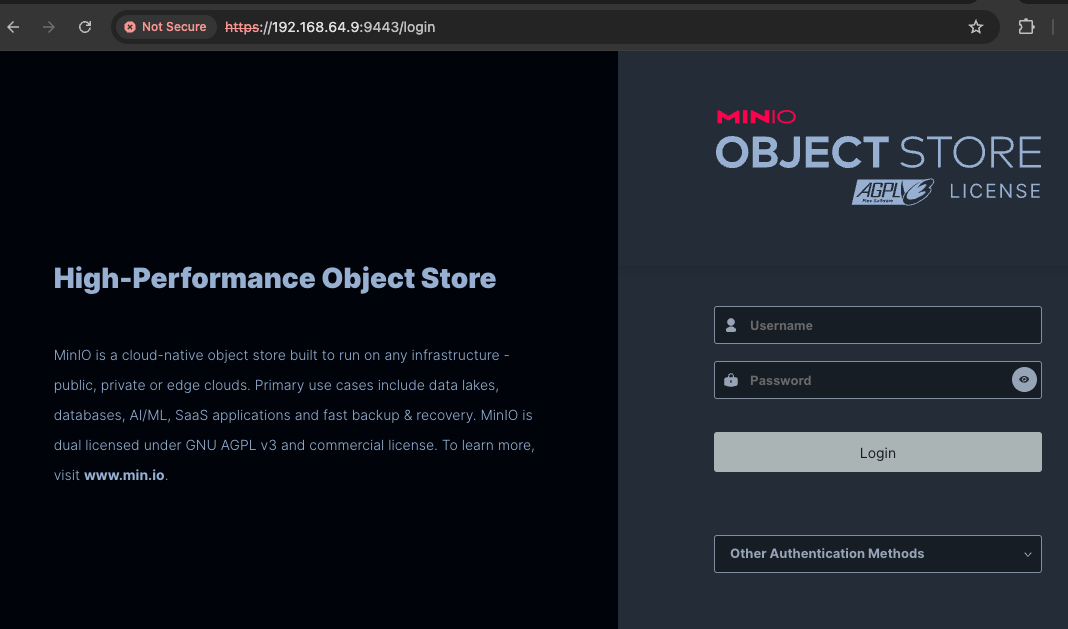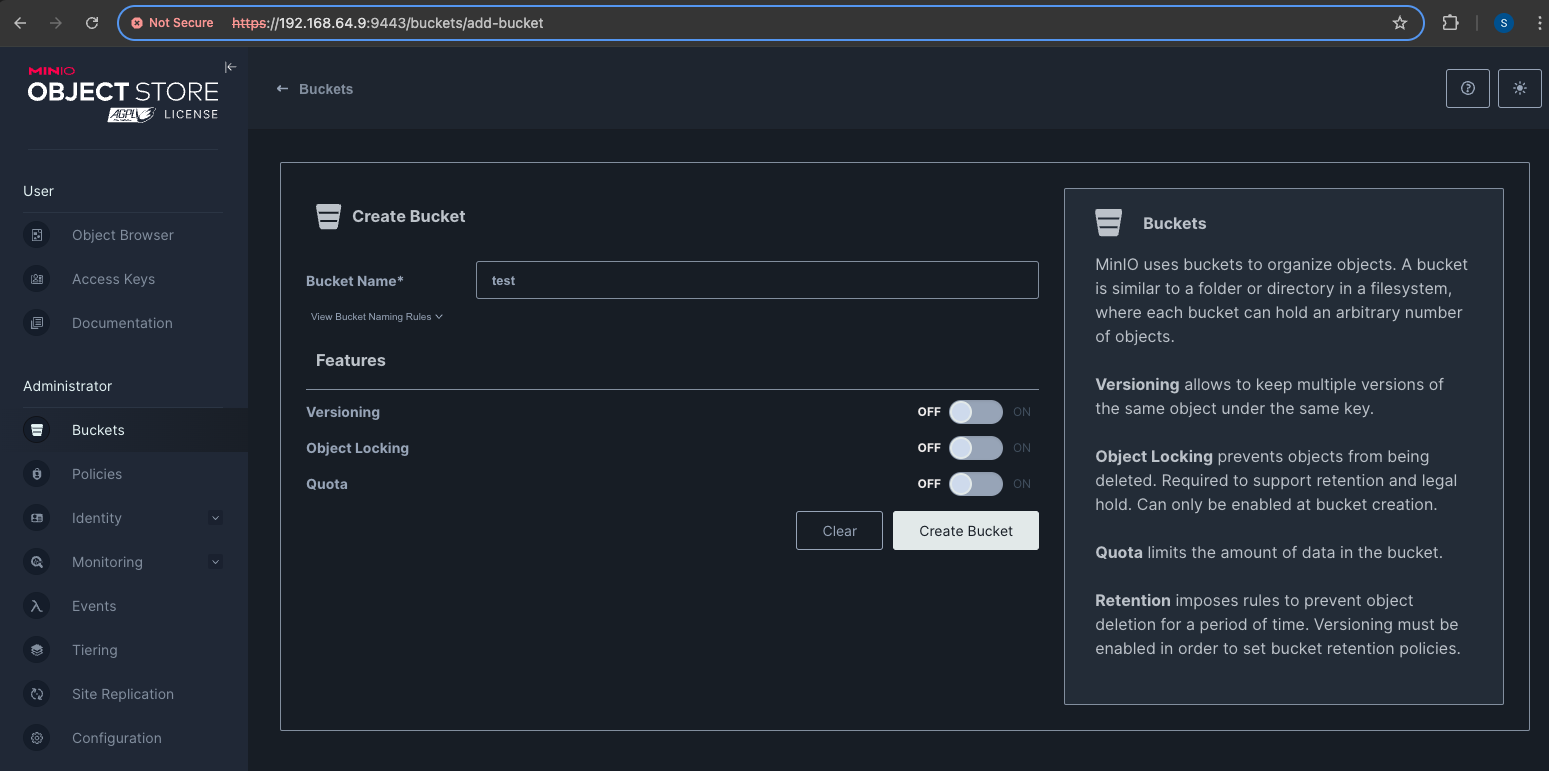Object store service is a common service nowdays, especially S3 compatible. The introduction of MinIO can be found here.
This article will demostrate how to setup MinIO Operator for testing purpose, this is NOT a comprehensive guide for production scenario.
- Deploy MinIO Operator
- Deploy MinIO Tenant
- Create bucket in MinIO Console
Depoly MinIO Operator
We use Helm to deploy the operator.
helm repo add minio-operator https://operator.min.io
helm install --namespace minio-operator --create-namespace operator minio-operator/operator
Deploy MinIO Tenant
1.Download tenant CR file tenant-values.yaml
curl -sLo tenant-values.yaml https://raw.githubusercontent.com/minio/operator/master/helm/tenant/values.yaml
2.Configure Tenant Update tenant-values.yaml
tenant:
name: myminio
image:
repository: quay.io/minio/minio
tag: RELEASE.2024-07-16T23-46-41Z
pullPolicy: IfNotPresent
imagePullSecret: { }
scheduler: { }
configuration:
name: myminio-env-configuration
configSecret:
name: myminio-env-configuration
accessKey: minio
secretKey: minio123
pools:
- servers: 1
name: pool-0
volumesPerServer: 1
size: 10Gi
storageAnnotations: { }
annotations: { }
labels: { }
tolerations: [ ]
nodeSelector: { }
affinity: { }
resources: { }
securityContext:
runAsUser: 1000
runAsGroup: 1000
fsGroup: 1000
fsGroupChangePolicy: "OnRootMismatch"
runAsNonRoot: true
containerSecurityContext:
runAsUser: 1000
runAsGroup: 1000
runAsNonRoot: true
allowPrivilegeEscalation: false
capabilities:
drop:
- ALL
seccompProfile:
type: RuntimeDefault
topologySpreadConstraints: [ ]
mountPath: /export
subPath: /data
metrics:
enabled: false
port: 9000
protocol: http
certificate:
externalCaCertSecret: [ ]
externalCertSecret: [ ]
requestAutoCert: true
certConfig: { }
features:
bucketDNS: false
domains: { }
enableSFTP: false
buckets: [ ]
users: [ ]
podManagementPolicy: Parallel
liveness: { }
readiness: { }
startup: { }
lifecycle: { }
exposeServices: { }
serviceAccountName: ""
prometheusOperator: false
logging: { }
serviceMetadata: { }
env: [ ]
priorityClassName: ""
additionalVolumes: [ ]
additionalVolumeMounts: [ ]
ingress:
api:
enabled: false
ingressClassName: ""
labels: { }
annotations: { }
tls: [ ]
host: minio.local
path: /
pathType: Prefix
console:
enabled: true
ingressClassName: ""
labels: { }
annotations: { }
tls: [ ]
host: minio-console.local
path: /
pathType: Prefix
3.Deploy tenant
helm install --namespace myminio --create-namespace --values tenant-values.yaml myminio minio-operator/tenant
4.Expose console service
kubectl port-forward svc/myminio-console 9443 -n myminio --address=0.0.0.0
5.Access MinIO console and create bucket
- Username: minio (accessKey)
- Password: minio123 (secretKey)




